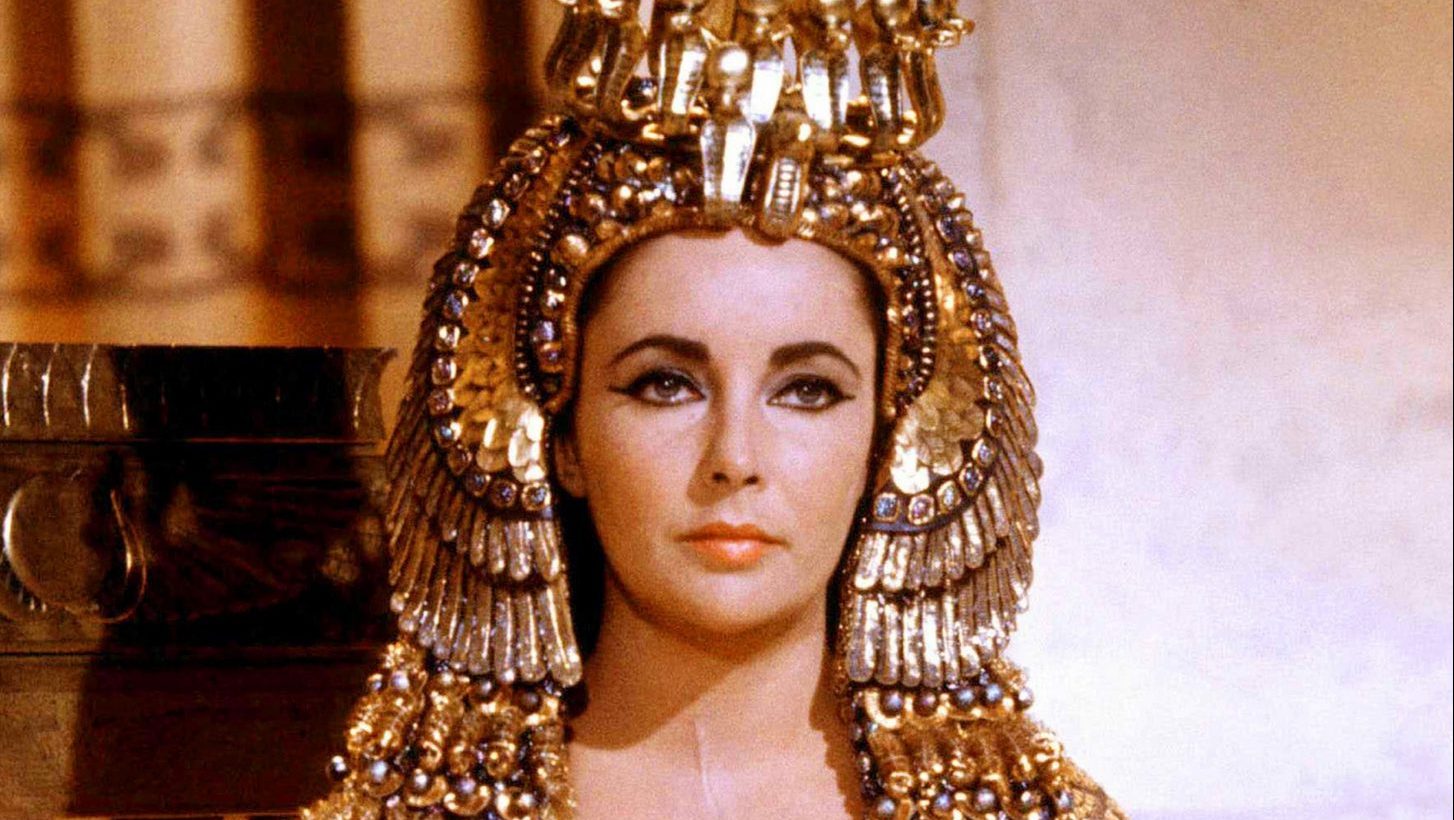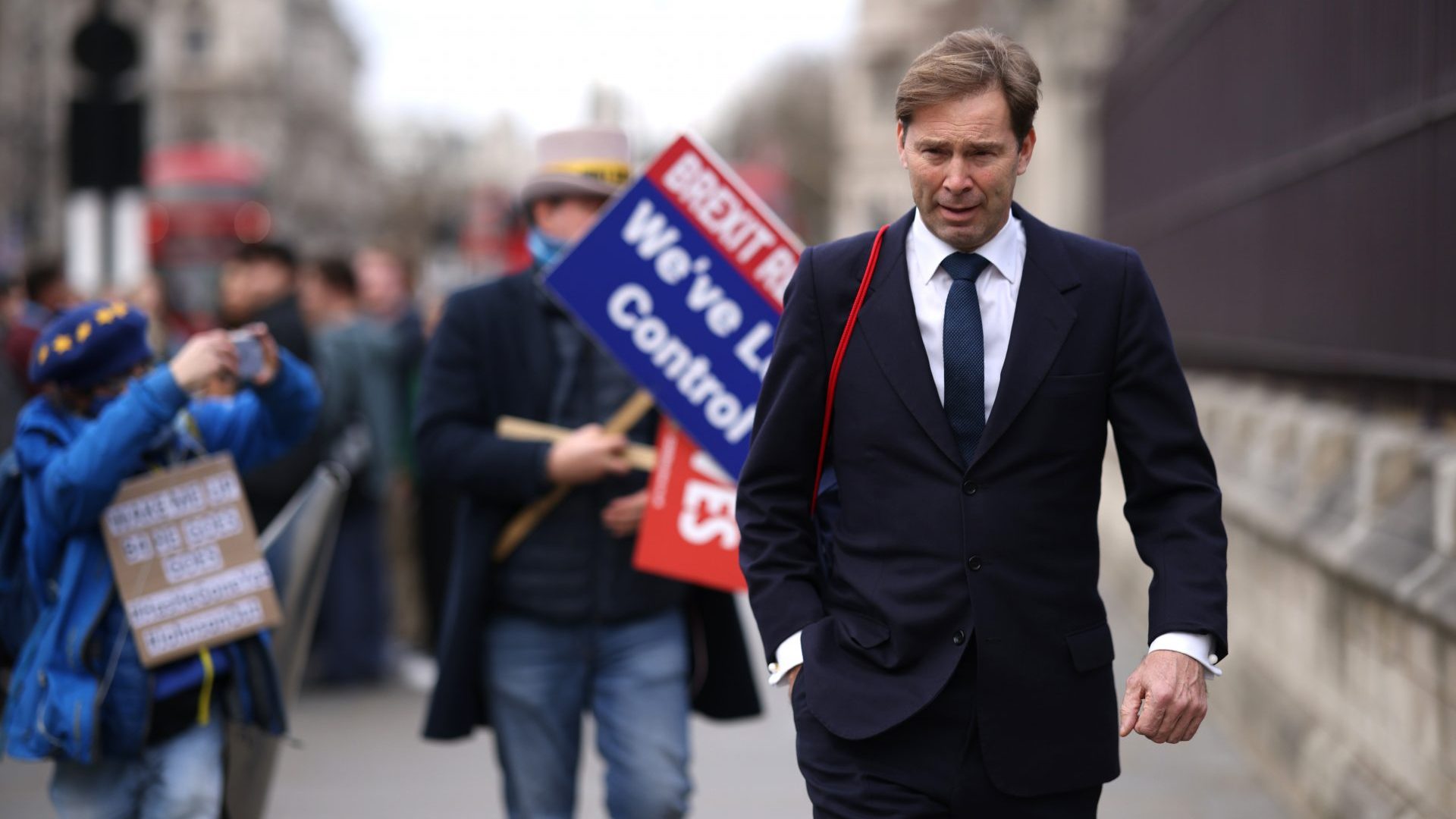After attending the UK premiere of Cleopatra in July 1963, the film’s star, Elizabeth Taylor, returned to the Dorchester Hotel where she was staying, and threw up.
Taylor had refused to turn up for the film’s world premiere the previous month, perhaps understandably so. She nearly died during production, and, along with her co-star, Richard Burton, had become the centre of the first modern celebrity scandal. Their love affair ended two marriages, drew the ire of the Vatican and saw them chased around Rome by paparazzi. It was, Taylor later said, “probably the most chaotic time of my life”.
Even before release, Cleopatra had become known as a bloated, excessive failure, the archetypal troubled production. Principal photography took two-and-a-half years to complete. The original director was fired. Its Oscar-winning producer never made another movie. Many of the original cast were replaced along the way. The original cut of the film came in at an unwieldy four hours and three minutes (excluding the intermission).
“Its reputation is to do with the interpersonal drama on set, which seemed to be almost permanent, and its status as a film that is not a flop but was potentially financially ruinous for 20th Century Fox,” says James Russell, an expert in the history of cinema and head of media at De Montfort University.
It is widely accepted that the budget for Cleopatra spiralled to around £35m, at the time the most expensive film ever made and nearly three times the previous record holder, Ben Hur. The figure equates to around £338m in today’s money. Only Star Wars: The Force Awakens has cost more. According to a new book, Cleopatra and the Undoing of Hollywood by Patrick Humphries, more cement was used to recreate Rome’s Forum on set than was needed for construction of the city’s 1960 Olympic stadium. Taylor had food flown in from her favourite deli in New York, and the budget for paper cups used on set alone swelled to £79,000.
The lavish spending was symptomatic of a strategy designed to preserve the prominence of “Old Hollywood”, the studio system that dominated in the 1930s and 1940s, but which was increasingly under threat from independent film-makers and the exponential increase in TV ownership, which saw cinema audience numbers falling.
“The studios concentrated resources on making bigger and bigger movies,” says Russell, “the assumption being that ‘OK, maybe people aren’t going every week, but they’re going sometimes, so we’ll make event movies’.” So, they’re making fewer movies every year but they’re making really big movies: blockbusters – at the time they’re known as ‘roadshows’ – and those are largely historical epics, like Cleopatra and musicals like South Pacific.”
In an era before CGI, the sets and battle scenes for these historical epics all had to be created for real. In Cleopatra, the most spectacular set-piece – her arrival into Rome – saw the Egyptian queen in golden robes sitting on a golden throne atop a 35ft high, 70ft long sphinx, drawn by 300 Nubian slaves flanked by elephants, charioteers and dancing girls. All this in front of a 6,000-strong horde of cheering extras in historical costumes.
“It was a very high-risk strategy,” Russell adds. “The interesting thing is that it is pretty much normal now. These days movies are completely messy, they cost $300m to make and no one has a clue if they’re going to break even.”
Yet Cleopatra started out as a cheap, quick cash-grab. With 20th Century Fox in financial trouble in the late 1950s, studio chief Spyros Skouras thought a remake of Fox’s 1917 silent film starring Theda Bara could boost the bottom line. Veteran producer Walter Wanger was given a modest budget of $2m and 64 days to shoot the movie. The casting of the Egyptian queen was crucial. The way she used her sexuality, her clothing, even her make-up, to exercise power in a world dominated by men was key.
Initially, Fox looked to its contracted actresses. Joan Collins screen-tested for the title role. However, Wanger had bigger ambitions, and convinced Skouras to back his vision. The budget rose to $5m, and established stars such as Sophia Loren, Audrey Hepburn and Gina Lollobrigida were considered. Taylor was always Wanger’s first choice. Legend has it that she dismissively asked him for $1m, a then-record fee for an actress, to which Wanger unexpectedly agreed. The reality was that the deal was the result of lengthy negotiations. Taylor “signed” her contract in front of the cameras in October 1959. It was a publicity stunt; the real paperwork would not be ready for months.
When it was, it stipulated that the upfront payment covered only 16 weeks of work. After this, her rate spiked to $50,000 a week. Taylor would also receive 10% of the box-office gross and the film would be shot in Todd-AO, a widescreen format developed by her late husband, Mike Todd, which she inherited after his death. In the end, she walked away with $7m.
With veteran director Rouben Mamoulian (The Mark Of Zorro, Blood And Sand), and Peter Finch and Stephen Boyd playing Caesar and Mark Antony respectively, filming began in late September 1960 at Pinewood Studios. Although it had excellent facilities and meant the production could benefit from UK government tax breaks, autumnal Buckinghamshire was no replacement for sun-scorched ancient Rome and Alexandria. Filming often had to be suspended because of rain, even frost. Imported palm trees wilted; the papier-mâché sets began to disintegrate. The 1,000 paid extras often had little, if anything, to do.
There were also problems with the script. The 1917 film had been a silent movie, and what words there were had only been written for captions.
Then, on the third day of filming, Taylor called in sick with a cold. Over the coming weeks, it developed into a serious fever. Mamoulian continued filming as best he could, but after repeated disagreements with Wanger, he was fired in January 1961. He had produced just 10 minutes of usable footage, none of which made the final cut. Production costs had already reached $7m.
Joseph L Mankiewicz, whose hits included All About Eve and Guys And Dolls, was brought in as his replacement. Known for dialogue-heavy, action-free films, he seemed an odd choice for a big-budget epic despite his Oscar-winning pedigree. Crucially, however, Taylor had worked with him before on Suddenly Last Summer, and she liked him.
Just as the actor seemed to be making a recovery, she was diagnosed with staphylococcus pneumonia. As Taylor’s condition worsened, there was serious concern for her life. An emergency tracheotomy was performed (the resulting scar was visible in the film). “I was pronounced dead four times,” she later said, and indeed at least one US newspaper erroneously reported her death.
While Taylor recovered, Mankiewicz set about reworking the script, and Fox cut its losses and moved production en masse to Rome’s Cinecittà studios, the abandoned sets later used in Carry on Cleo. With Finch and Boyd now no longer available, Rex Harrison was brought in as Caesar, Richard Burton as Marc Antony.
Taylor’s first day of filming with Burton was January 22, 1962. Both were married, but despite initial coolness, “you could almost feel the electricity between Liz and Burton,” wrote Wanger. An intense romance began and the couple did little to hide it. One on-screen kiss got longer with every take, until Mankiewicz was reduced to shouting “Does it interest you that it is time for lunch?”
The couple also became fair game for the paparazzi, a new breed of photojournalist. Named after the character Paparazzo, a tabloid photographer in Federico Fellini’s 1960 film La Dolce Vita, and armed with long-lens cameras, they hunted in packs, speeding across Rome on Vespas in search of lucrative, exclusive celebrity snapshots. The story – dubbed “Le Scandale” by the laconic Burton – kept news of John Glenn’s orbit of the Earth off the front pages.
“Taylor was trained and raised by the studios. She knew how to play the system; she knew the value of publicity,” says Prof Nancy Schoenberger, who co-wrote Furious Love, a biography of the stars’ relationship. “But she couldn’t get away to be alone with Burton without being chased. Being hounded by the paparazzi was one price they paid for their affair, but it also made them even more famous.”
The couple were photographed frolicking on a yacht in the Mediterranean and enjoying each other’s company on Rome’s Via Veneto. Often Taylor would step off set still wearing Cleopatra’s distinctive, winged “cats-eye” makeup. It became a sensation even before the film was released, Revlon releasing a cosmetics range inspired by the look.
When the film finally hit the screens, women began copying other elements of Taylor’s on-screen style, including maxi dresses, snake rings, arm cuffs and geometric hairstyles. Andy Warhol was moved to call Cleopatra the most influential film of the 1960s. “Audiences love it when what is happening on the screen parallels what is happening behind the scenes, and that was exactly part of their story,” says Schoenberger. “They were playing forbidden lovers and at the time they were married to other people, which was a huge scandal back in the day.”
When the couple returned to the United States, they were greeted by crowds, some holding signs saying “Adulterers go home”, and were condemned on the floor of the US Senate. But it was only Taylor, not both of them, who was condemned by the Vatican for “erotic vagrancy”. “It was the typical double standard of the day,” says Schoenberger. “She was the scarlet woman; she was vilified, until she wasn’t. Why? Because those two had so much charisma and were clearly so much in love.”
In March 1963 production finally wrapped, 889 days after it began. Future Minder star George Cole, whose role as a slave was originally scheduled to take 14 weeks to complete, had worked on it for 18 months. Mankiewicz – who would later describe the film as having been “conceived in a state of emergency, shot in confusion, and wound up in a blind panic” – had envisioned two films, both of three hours: Caesar and Cleopatra and Antony and Cleopatra. However, the studio chiefs wanted to capitalise on the fascination with “Liz and Dick”; no one would want to see a film that didn’t feature Burton.
Mankiewicz turned in a five-hour-20-minute rough cut and was promptly fired, only to be quickly reinstated when it was realised his knowledge was needed to produce something worthy of release. The version shown at the world premiere would be reduced by 16 minutes for the London premiere, and then cut again to three hours 12 minutes for general release.
Although reviews were mixed, Cleopatra was nominated for nine Oscars, including Best Film and Best Actor for Rex Harrison. It ultimately won four for art direction – set direction, cinematography, costume design and special effects. It was also the highest-grossing film of 1963, and a year after release had become one of the 10 highest-grossing films of all time. It broke even in 1966, ironically when Fox sold the TV rights for $5m.
Despite this, the film has been widely blamed for the death of “Old Hollywood”, but Russell believes this reputation is undeserved. “It’s not the football that smashes through the greenhouse,” he says, “but it comes at a point, and is very illustrative of a moment, when the production trends that were very dominant in Hollywood and the actual number of people going to see those movies fall out of whack and the trend starts to make less and less sense.”
Taylor and Burton eventually married in March 1964. Their torrid, alcohol-fuelled relationship would continue to be played out in the press and on the big screen in films like Who’s Afraid of Virginia Woolf? for which Taylor won a second Best Actress Oscar.
A decade later, the couple divorced, before a reconciliation and brief remarriage. In July 1976, they separated for a final time. “Maybe we loved each other too much,” Taylor said. They had lived in the centre of, and ultimately been torn apart by, a whirlwind that began with Cleopatra.



